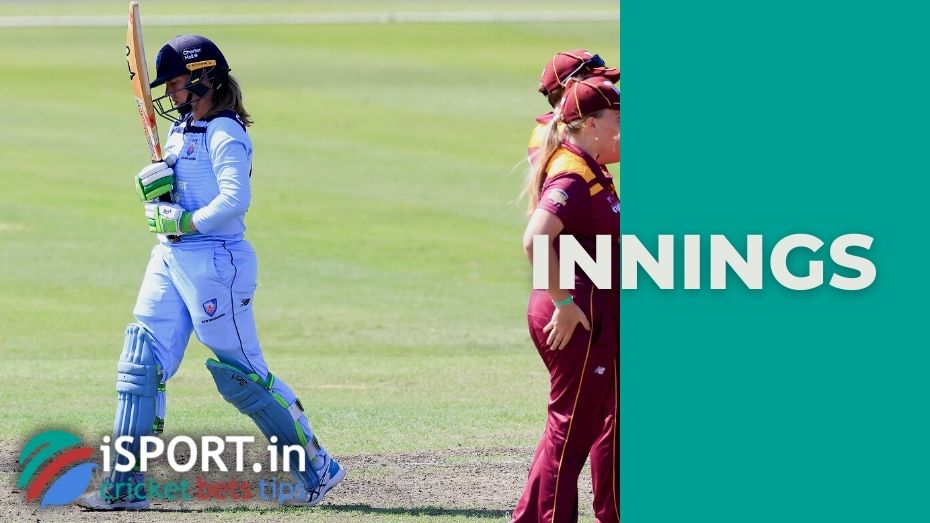Innings

An innings in cricket is a span of time during a match in which one of the teams acts as the server and the other team acts as the batter. A player is considered to be hitting during an innings regardless of whether he is a striker or a non-striker. In addition, innings refer to the duration of time during which a player bats. It is important to notice that the phrase may be used in both the singular and the plural form. This is a significant distinction from softball and baseball, where the only number that is mentioned is the inning.
Innings in Cricket: Origin
The earliest mention of innings dates back to the 30s of the 18th century. So, after the match between the teams of Kent and the London Cricket Club, the St. The James Evening Post wrote:
“The Kentians might not have been able to win with another inning, but there was not enough time for that”.
The name innings in cricket is said to have originated from the ancient English word “innian,” which literally means “get inside,” “put,” or “enter.” It is possible that this is the origin of the phrase. If we are to believe the earliest references to innings, even back then, this phrase often denoted the beginning of the turn of one of the sides to defeat the other (which is where the idiom “to be in to bat” originates from).
Innings in Cricket: Regulations
Innings has a whole section on Laws (# 13):
13.1.1. The match consists of one or two innings depending on the agreement of the parties.
13.1.2. Innings in cricket may be limited to a certain number of overs by agreement of the teams.
13.1.2.1. If such a decision has been made and recorded, then subsequent innings will also be limited to the specified number of overs.
13.1.2.2. If the match consists of two innings, then the agreement shall affect the first innings of each side, the second innings of each side, or both innings of both the first and second teams. Also, the criteria for determining the final result of the match are additionally established.
13.2. Rotation of innings. In matches that consist of two innings, the sides enter the game in turn (except for some episodes mentioned in other sections, eg 15.2 “Losing Innings”).
13.3. Completed innings. innings is completed when the following mandatory conditions are met:
13.3.1. All batsmen from the battering side are sent out.
13.3.2. The wicket is destroyed / the batsman is sent out, while the serving side has balls left that no one can hit.
13.3.3. The captain announced the closure of the innings.
13.3.4. The captain announced the loss of the innings.
13.3.5. The set number of overs has been exhausted or the match time has come to an end.
13.4. Lot. To determine the order of the innings, captains toss a coin on the field in the presence of both judges no earlier than half an hour and no later than 15 minutes before the start of the match.
13.5. Confirmation of the decision. At the conclusion of the toss, the winning team captain must determine where to start (service or hitting) and then communicate his decision to the losing captain and the officials. After the latter has fixed the command queue, it is no longer possible to undo this decision.
During first-class matches, it is customary for each side to play up to four innings, and during each of those innings, both teams are given the option to hit twice. However, this regulation is not always adhered to in reality. In a game with limited overs, there are only two innings, and each side gets the opportunity to hit every single time.
Different strategies may be used to conclude innings in cricket. Some of the most popular choices include removing all batters from the battering side from the game or, in the event of a match played in a limited-overs style, playing until the predetermined number of overs has been used up.
Last but not least, the word “innings” may also be used to refer to the “score” of an individual batter as well as the whole team. For instance, if a commentator says that a batter has 105 innings, he is referring to the fact that he has scored 105 runs throughout his innings, which is equivalent to surpassing the numbers for the team’s innings that he is currently playing. There is also the possibility of saying, “Team’s first/second innings totaled 504,” which indicates that the batters involved in the game scored a total of 504 runs.
Interestingly, innings can also be used figuratively. It usually has a temporary connotation in such cases: for example, the phrase “A good innings” can be translated as “long life.”
